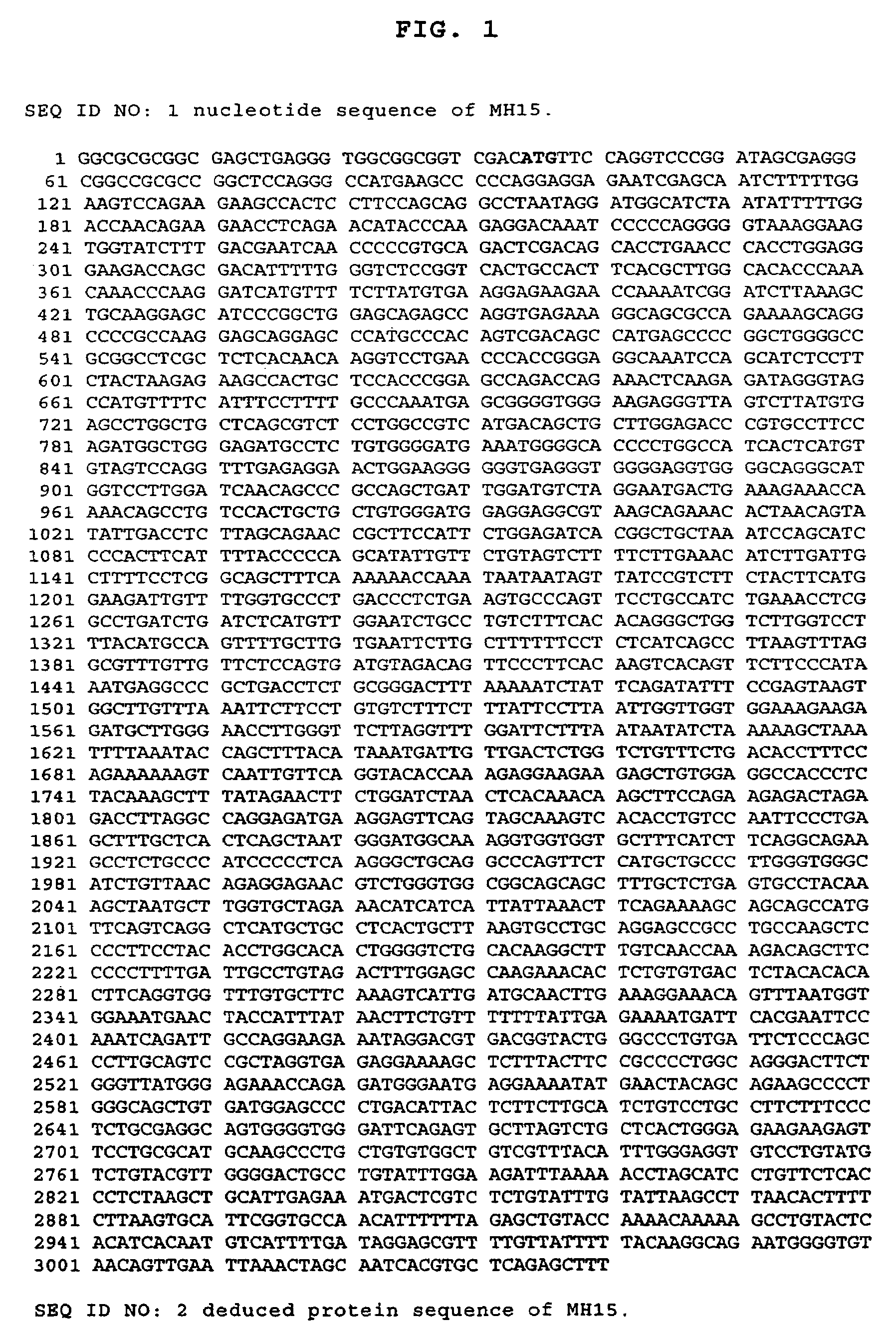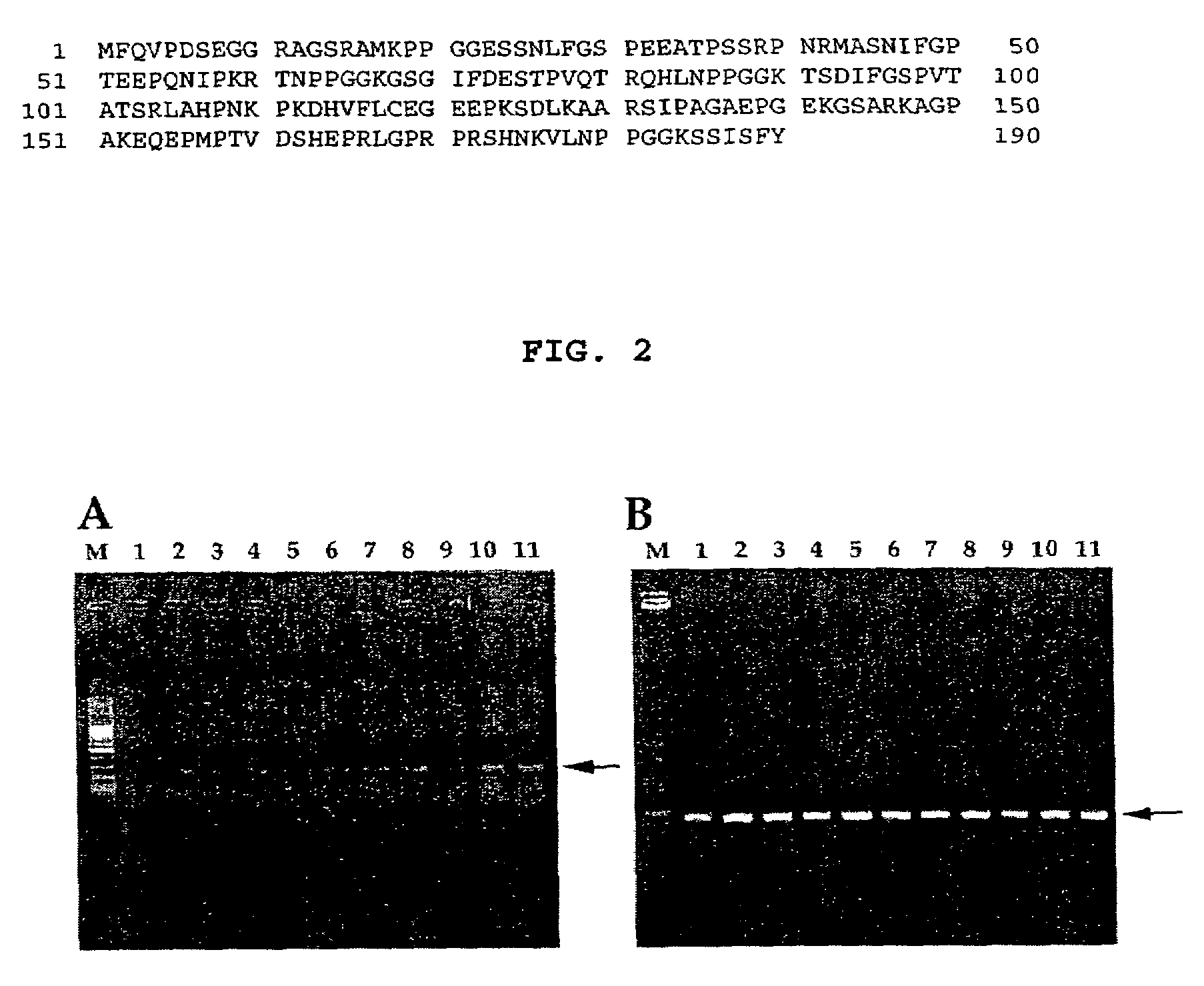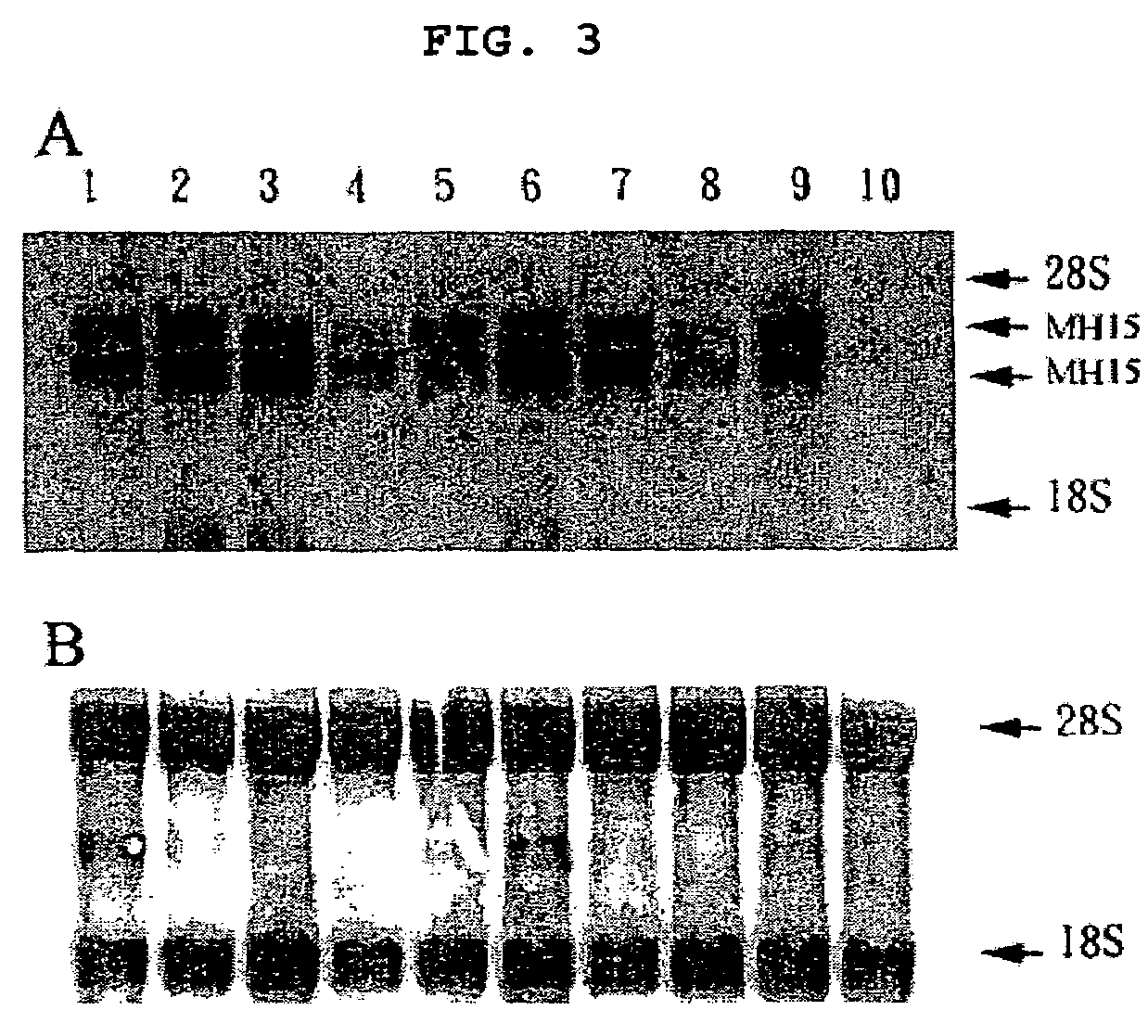Cancer specific gene MH15
a cancer specific gene and gene technology, applied in the field of cancer specific gene mh15, can solve the problems of few large-scale screening programmes for cancer other than breast, patient harm, and disease that cannot be detected symptomatically
- Summary
- Abstract
- Description
- Claims
- Application Information
AI Technical Summary
Problems solved by technology
Method used
Image
Examples
example 1
RT-PCR of MH15 in Peripheral Blood Mononuclear Cells from a Healthy Volunteer and Cancer Cell Lines
I. Materials and Methods
[0116]A. Blood Sample:
[0117]Fresh peripheral venous blood collected from a healthy volunteer was used as control, and peripheral blood mononuclear cells (PBMCs) were isolated there from using Ficoll-Paque plus (Amersham Biosciences).
[0118]B. Human Cell Lines:
[0119]Human cell lines such as a gastric cancer cell line (KATO III), breast cancer cell lines (MDA-MB-435S, MCF 7), hepatoma cell lines (Hep3B, HepG2), a prostate cancer cell line (DU 145), an esophageal cancer cell line (CE 146T / VGH), kidney cell lines (293, 293T) and a lung cancer cell line (NCI-H146) were purchased from BCRC, Taiwan. The cell lines, KATOIII and NCI-H146, were maintained in RPMI 1640 (Life Technologies, Inc.) supplemented with 10% fetal calf serum. The 293, 293T, DU 145, MDA-MB-435S and MCF 7 cell lines were maintained in DMEM (Life Technologies, Inc.) supplemented with 10% fetal calf ser...
example 2
Northern Blot Analysis of MH15 in Peripheral Blood Mononuclear Cells and Cancer Cell Lines
I. Materials and Methods
[0127]A. Blood Sample:
[0128]PBMC from a healthy volunteer was prepared as previously described in example 1.
[0129]B. Cell Lines:
[0130]A gastric cancer cell line (KATO III), breast cancer cell lines (MDA-MB-435S, MCF 7), a hepatoma cell line (HepG2), a prostate cancer cell line (DU 145), an esophagus cancer cell line (CE 146T / VGH), a kidney cell line (293T), a lung cancer cell line (NCI-H23) and a lung cell line (MRC-5) were used. All cell lines were purchased from BCRC, Taiwan. The cell lines, KATO III and NCI-H23, were maintained in RPMI 1640 (Life Technologies, Inc.) supplemented with 10% fetal calf serum. The cell lines, 293T, DU 145, MDA-MB-435S, MCF 7 and MRC-5, were maintained in DMEM (Life Technologies, Inc.) supplemented with 10% fetal calf serum. The cell lines, HepG2 and CE 146T / VGH, were maintained in DMEM with NEAA (Life Technologies, Inc.) and supplemented w...
example 3
Detection of MH15 in Peripheral Blood Mononuclear Cells from Gastric Cancer Patients
[0134]Gastric cancer has a high mortality rate in many countries, particularly Taiwan, America, Japan and China. In order to determine whether MH15 is a potential biomarker for gastric cancer, the expression of MH15 mRNA in peripheral blood mononuclear cells (PBMC) from both gastric cancer patients and healthy individuals was examined with RT-PCR and real time PCR techniques.
I. Materials and Methods
[0135]A. Blood Sample:
[0136]Peripheral venous blood samples were collected from 10 patients with gastric cancer. Also, peripheral venous blood samples from 10 healthy volunteers were obtained as controls. Patient samples were collected at National Taiwan University Hospital, Taiwan. Peripheral blood mononuclear cells (PBMC) were isolated from freshly collected citrated venous blood using Ficoll-Paque (Amersham Biosciences).
[0137]B. Reverse Transcription-PCR Analysis:
[0138]The single step RNA isolation meth...
PUM
| Property | Measurement | Unit |
|---|---|---|
| volume | aaaaa | aaaaa |
| volume | aaaaa | aaaaa |
| volume | aaaaa | aaaaa |
Abstract
Description
Claims
Application Information
 Login to View More
Login to View More - R&D
- Intellectual Property
- Life Sciences
- Materials
- Tech Scout
- Unparalleled Data Quality
- Higher Quality Content
- 60% Fewer Hallucinations
Browse by: Latest US Patents, China's latest patents, Technical Efficacy Thesaurus, Application Domain, Technology Topic, Popular Technical Reports.
© 2025 PatSnap. All rights reserved.Legal|Privacy policy|Modern Slavery Act Transparency Statement|Sitemap|About US| Contact US: help@patsnap.com



